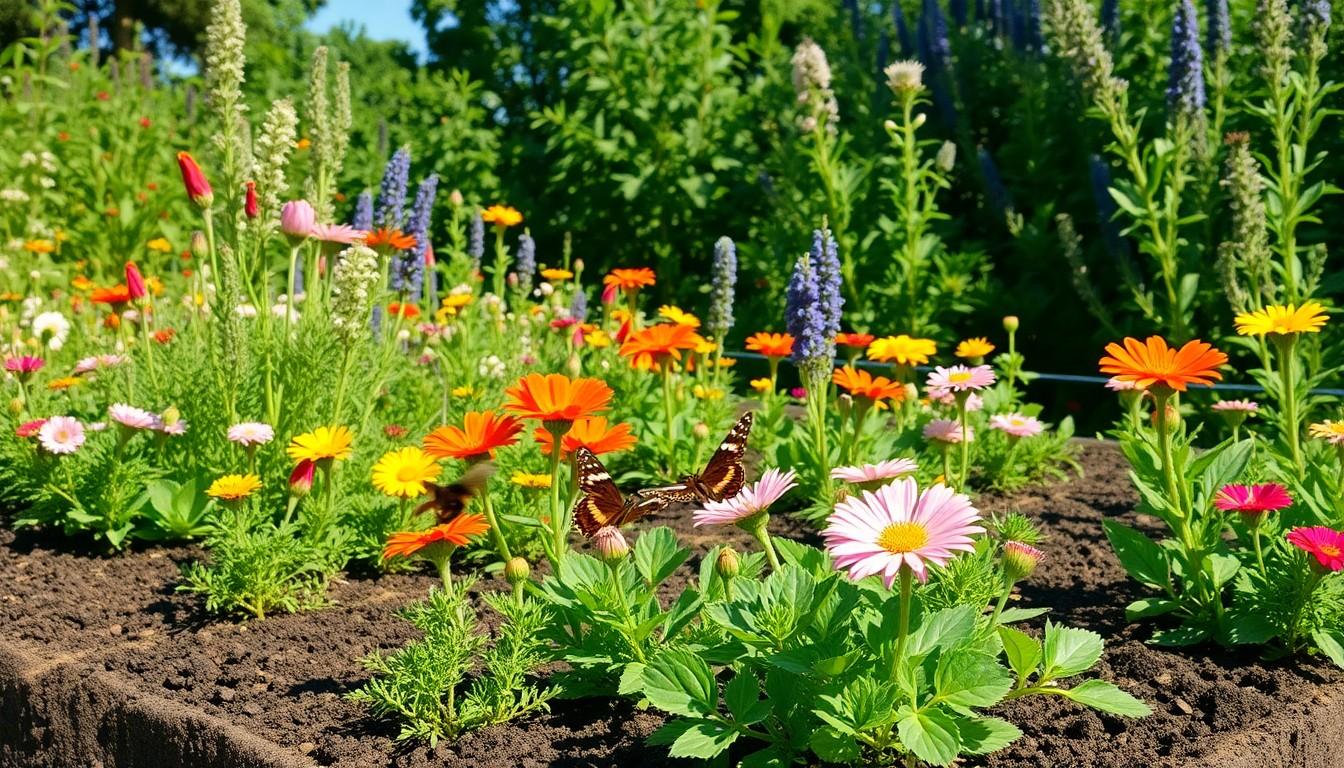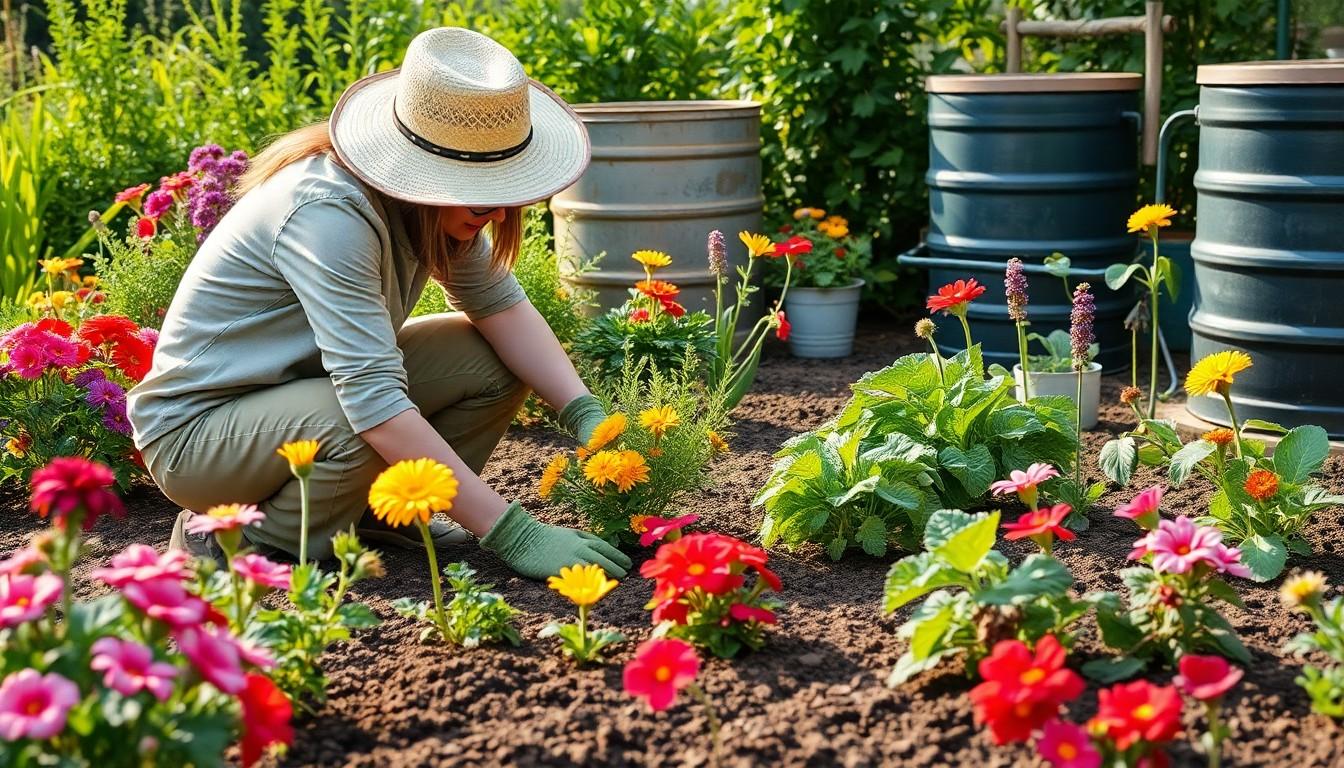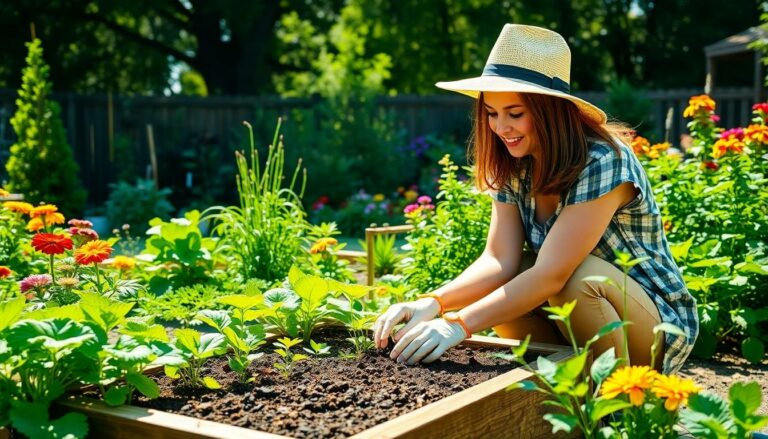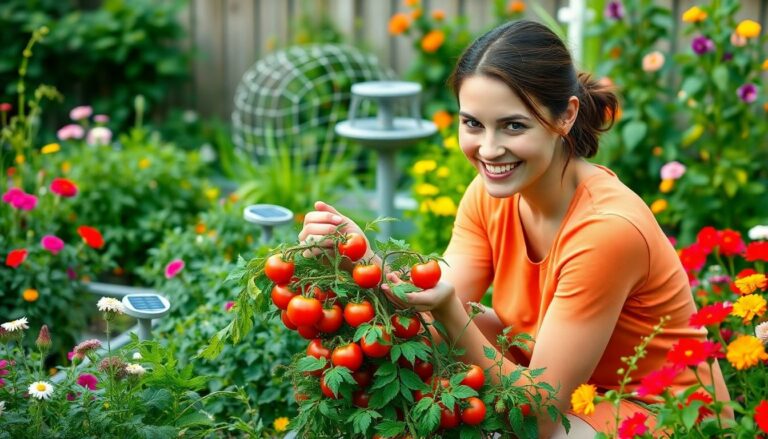Imagine stepping into your backyard and being greeted by a lush paradise that not only looks good but also gives Mother Nature a high-five. Creating a sustainable garden isn’t just about growing plants; it’s about cultivating a lifestyle that respects the Earth while providing fresh veggies and vibrant flowers. Who knew gardening could be so eco-friendly and rewarding?
how to create a sustainable garden
Sustainable gardening focuses on environmentally friendly practices that promote biodiversity and healthy ecosystems. It involves methods that conserve resources while providing nutritious food and beautiful plants.
What Is Sustainable Gardening?
Sustainable gardening uses techniques that minimize environmental impact. Practices include organic pest control, composting, and using native plants. These methods enhance soil health, reduce chemical usage, and encourage local wildlife. By maintaining a diverse garden, sustainable gardening fosters resilience against pests and diseases.
Benefits of Sustainable Gardening
Sustainable gardening offers numerous advantages. It conserves water through efficient irrigation systems. This type of gardening reduces waste by repurposing organic materials into compost. Furthermore, it supports local wildlife, creating habitats for beneficial insects and birds. Healthy gardens yield fresh produce, providing nutritional benefits while reducing reliance on store-bought fruits and vegetables. All these factors contribute to stronger ecosystems and healthier communities.
Planning Your Sustainable Garden

Effective planning forms the foundation of a sustainable garden. Focusing on the specifics of the garden space and selecting the right plants ensures a thriving ecosystem.
Assessing Your Space
Begin by evaluating the available area for gardening. Consider sun exposure, soil quality, and drainage patterns. Measuring the space allows for informed decisions on plant selection and layout. Observing existing flora and fauna helps identify native species already flourishing in the environment. Understanding local climate conditions supports appropriate plant choices, ensuring optimal growth and health. Document all findings, creating a comprehensive plan that maximizes the potential of the garden.
Choosing Native Plants
Opt for native plants to enhance sustainability. These plants adapt well to local environments and require less water and maintenance. Selecting a variety of species promotes biodiversity, providing habitats for pollinators and beneficial insects. Research local nurseries for native options that thrive in your region. Additionally, incorporating flowering plants supports a continuous bloom cycle, attracting various wildlife. Prioritize plants that align with the garden’s design and purpose, ensuring a vibrant and resilient ecosystem.
Soil Health and Management
Healthy soil serves as the foundation for a sustainable garden. It influences plant growth, nutrient availability, and water retention. Healthy soil supports beneficial microorganisms, which contribute to enhanced growth and resilience. The ability of soil to retain moisture decreases the need for frequent watering, conserving water effectively. Nutrient-rich soil promotes strong, vibrant plants that are more resistant to pests and diseases. This ultimately leads to a flourishing ecosystem that benefits both the garden and surrounding wildlife.
Importance of Healthy Soil
Healthy soil plays a critical role in sustainable gardening. It aids in nutrient cycling, which is essential for plant health. Healthy soil improves drainage, preventing issues like root rot. It retains moisture, allowing plants to access water during dry spells. Establishing a diverse range of microorganisms enhances soil structure, making it easier for roots to penetrate. Nutrient availability increases with organic matter, ensuring plants thrive. These factors create an environment where biodiversity flourishes, supporting various species in the ecosystem.
Organic Soil Amendments
Organic soil amendments enhance soil health and fertility. Compost provides essential nutrients while improving soil structure and moisture retention. Manure enriches soil with nitrogen, promoting healthy plant growth. Mulch protects against weeds while maintaining moisture levels. Cover crops, such as clover, prevent soil erosion and fix nitrogen in the soil. Incorporating these organic materials adds both physical and biological diversity to the garden. Regularly amending soil with organic matter supports a sustainable and productive gardening practice.
Water Conservation Techniques
Water conservation is vital for sustainable gardening. Implementing effective strategies significantly reduces water usage while maintaining healthy plants.
Efficient Watering Methods
Utilizing drip irrigation systems delivers water directly to plant roots, drastically reducing evaporation and runoff. Hand watering or using soaker hoses allows for targeted hydration, ensuring that moisture reaches the plants without wastage. Timing watering early in the morning or late in the evening minimizes evaporation. Mulching around plants retains soil moisture, requiring less frequent watering. Prioritize deep watering sessions over shallow ones, encouraging deeper root growth for resilience against drought. These efficient methods combine to create a more sustainable approach to water use in the garden.
Rainwater Harvesting
Collecting rainwater provides an excellent resource for garden irrigation. Setting up rain barrels allows for the storage of runoff from roofs, capturing water during storms. Install gutter systems to direct rain into barrels, making it easy to access for future use. This practice reduces reliance on municipal water supplies and lowers water bills. Utilizing rainwater also promotes nutrient-rich hydration for plants. Integrating a simple filtration system ensures water purity, making it suitable for garden use. Rainwater harvesting contributes positively to sustainable gardening efforts, facilitating conservation of this precious resource.
Pest Management in Sustainable Gardens
Pest management plays a vital role in maintaining a thriving sustainable garden. It focuses on methods that minimize harm to the environment while effectively controlling pest populations.
Integrated Pest Management
Integrated pest management, or IPM, involves a combination of strategies to manage pests sustainably. This approach emphasizes monitoring pest levels and identifying pest problems early. Biological control methods, such as introducing natural predators like ladybugs, help maintain balance in the ecosystem. Use of organic pesticides serves as an alternative when necessary, targeting specific pests without harming beneficial insects. Regularly rotating crops can disrupt pest life cycles, minimizing infestations. Encouraging habitat diversity also reduces pest populations, as it attracts a variety of insects and animals that prey on harmful species.
Encouraging Beneficial Insects
Encouraging beneficial insects creates a healthier garden ecosystem. Planting nectar-rich flowers attracts pollinators like bees and butterflies. These insects not only aid in pollination but also support the overall health of plants. Providing habitats such as flowering margins and small water sources invites predatory insects like lacewings and parasitic wasps, both of which keep pest populations in check. Avoiding broad-spectrum pesticides prevents harm to these helpful insects, ensuring they thrive in the garden. Implementing companion planting also strengthens relationships between plants and beneficial insects, promoting natural pest control and a more resilient garden.
Harvesting and Beyond
Harvesting represents a crucial phase in sustainable gardening. This stage involves not only gathering produce but also understanding optimal harvesting techniques for each plant.
Guidelines for Harvesting
Use the right time for harvest, as it varies for each vegetable and fruit, ensuring maximum flavor and nutrition. Consider picking early in the morning or late in the afternoon for cooler temperatures, which helps preserve the freshness of the crops. Prioritize gentle handling to avoid bruising or damaging plants. In addition, employ sharp tools for clean cuts, which can promote better growth for remaining plants. Observe signs of ripeness closely; for example, ripe tomatoes have a rich color and slight softness when gently squeezed. Monitoring these factors ensures a productive and enjoyable gardening experience.
Composting and Recycling Garden Waste
Implement composting as an effective way to enhance garden sustainability. This practice transforms kitchen scraps and garden waste into nutrient-rich soil amendments. Collect vegetable peelings, coffee grounds, and dried leaves to create a balanced compost pile. Ensure the pile has equal parts of green materials, like grass clippings, and brown materials, such as dried leaves, for optimal decomposition. Turn the compost regularly to aerate it and speed up the breakdown process. Adding compost improves soil health while minimizing waste sent to landfills, fostering a sustainable gardening environment.
planet for generations to come
Creating a sustainable garden is a rewarding journey that nurtures both the environment and the gardener. By implementing eco-friendly practices and focusing on biodiversity, anyone can cultivate a vibrant ecosystem that thrives on its own. The benefits extend beyond personal enjoyment, contributing to healthier communities and stronger ecosystems.
As gardeners embrace native plants, healthy soil management, and water conservation techniques, they foster resilience in their gardens. This commitment not only enhances plant growth but also supports local wildlife, creating a harmonious balance. With thoughtful planning and mindful practices, sustainable gardening becomes a fulfilling lifestyle choice that positively impacts the planet for generations to come.




